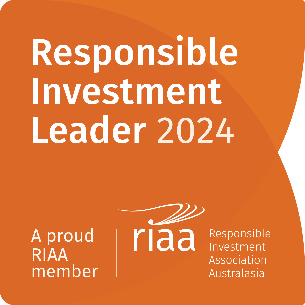Insights into our corporate health

5 September 2019
Equity markets traded with an unfamiliar level of volatility during August as investors contended with a deluge of information, both international and domestic. Global growth concerns have heightened in tandem with an escalation in the US-China trade dispute. This has resulted in the US yield curve inverting between the 2-year and 10-year durations (usually a sign of an impending recession), and we now have over US$14tn in global bonds trading with negative yields. In fact, in an historical first, a Danish bank recently launched a negative interest rate mortgage where loans to homeowners are being charged at minus 0.5% per annum! Against this uncertain backdrop, many of our local listed companies were also active, releasing their earnings results. This is an important time for investors as we get greater insight into the financial performance being achieved by our companies and, of equal relevance, their views on the outlook for the economy and their business in particular.
In general, this past month’s earnings season across New Zealand and Australia has been, at best, mixed. The results reported by those companies on the ASX200 Index for example have, in aggregate, been amongst the weakest seen in recent years in terms of profit growth. This has resulted in analysts having to downgrade their profit outlook for the coming year by 2.1% (or AUD$2.5bn). The sources of these disappointing profit outcomes were reasonably broad based with headwinds experienced across most sectors, although particularly affected were the Traditional Media and Coal sectors. There were a few sectors which enjoyed positive outcomes, but these were limited in number and included Healthcare and the listed Property Trusts. In New Zealand the experience was more balanced with almost as many results being reported ahead of consensus estimates as below, and there has only been a slight reduction in expectations for next year. Across both markets this was typically more reflective of revenue challenges as opposed to disappointing cost experiences - with overall margins improving through cost-out programmes, rationalization of business structures and the introduction of technology solutions.
Notwithstanding these financial outcomes, what investors also found beneficial during this time was the identification of key themes which are influencing the performance of our listed businesses. These are typically a focus for management as they explain their past and current performance. A common view from these commentaries last month was that the domestic economic picture is currently uncertain, which was reflected in data concerning business confidence. But encouragingly, despite this backdrop we did see signs in the results of green-shoots beginning to appear in amongst the Australian commentaries. This was especially the case for those businesses that are exposed to consumers. A good example of this came from observations by JB Hi-Fi with their same-store sales growing by 3% in Australia and 8% in New Zealand. Similar sentiments were also shared by Kathmandu, who in an unscheduled trading update identified that second-half trading growth in Australia was up 2.7%. Unfortunately, these sentiments were not universal, and those companies exposed to residential housing talked a very different story. In this sector conditions appear more challenging. Examples of this included conservative statements by furniture retailer Nick Scali, whilst Fletcher Building also highlighted a material contraction in forward work for their Australian residential operations. It will be interesting to see how the next six months present themselves for these businesses though as recent auction clearance rates in Melbourne and Sydney have credibly improved.
Variable global economic conditions were also presented by many management teams as influential to their current fortunes. The influence of China to Australasian businesses is well understood but after years of positive contribution, companies are having to redesign strategies to accommodate slowing demand and regulatory challenges in this market. Examples of this include the listed vitamin business Blackmores, who identified negative changes occurring to e-commerce rules, and casino operator Star Entertainment who highlighted a slowdown in the number of Chinese tourists visiting their properties in Australia. Counter to these challenges were references to the influence from US activity which were broadly more positive during the reporting season with companies such as James Hardie highlighting improved pricing outcomes, and Brambles identifying revenue growth of 7% in their American division, through pricing and volume growth. These underlying insights into activity conditions were sometimes overwhelmed by the effects of the sharp decline in interest rates. Through its impact on funding costs and on the ability to restructure corporate balance sheets, Australasian companies are enjoying an environment where central banks are cutting rates and bond yields are collapsing. Examples of this were evident across listed Infrastructure and Real Estate companies. Even in the Healthcare sector, Resmed reported their success in recently accessing the US private placement market for $500m at very low rates.
Dividends also continued to be a major focus for company boards last month. In the current environment of low interest rates, there remains a strong desire for shareholders to receive dividend income in lieu of risky corporate growth opportunities. In recent years this has been reflected in rising pay-out ratios (the amount of profit after tax that is distributed to shareholders). As companies leverage off their strong balance sheets and reduce levels of capital spending, expectations into 2020 are that pay-out ratios, and consequently dividends, will rise again. Last year in the ASX200 the pay-out ratio was at 73%, but over the next 12-months analysts anticipate a lift towards 79%. This approach to capital management has, and continues to be, well received by the market. During the past month the share prices of those companies which upgraded their dividend policy (higher pay-out ratios) outperformed the index by greater than 2% on the day of their results announcement. In New Zealand during August this same thematic was evidenced by telecommunications business Spark. As part of their full-year results release, Spark management committed to retaining their current dividend policy and highlighted an expectation that going forward their dividends will be fully supported by operating cash flow. Their share price rallied strongly on this news.
There are currently a broad range of drivers which are influencing equity market returns. Even though recent profit results were not as positive as investors had hoped, broad corporate earnings continue to grow (in FY20, ASX200 earnings are forecast to increase by 7%, whilst the market expects the NZX50 to grow its bottom-line by 5%). The economic performance of New Zealand, Australia and our major trading partners will continue play a role in this and although the prospects for broader expansion are looking vulnerable, the dividend stream coming from Australasian equities will continue to attract investor interest. The NZX50 Index currently offers a cash (after tax) dividend yield of 3.5% whilst for the ASX200 Index it is 4.5%, and with the yield on 10-year New Zealand government bonds only offering slightly more than 1% (before tax), these prospective dividend streams are hard to ignore.





